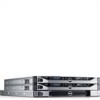Dell PowerVault NX3500 Administrator's Guide - Page 164
NFS Insecure Access to Secure Export, NFS Mount Fails Due to Export Options
 |
View all Dell PowerVault NX3500 manuals
Add to My Manuals
Save this manual to your list of manuals |
Page 164 highlights
NFS Insecure Access to Secure Export Description Cause Workaround User tries to access a secure export from an insecure port. Secure export requirement means that the accessing clients must use a well-known port (below 1024), which usually means that they must be root (uid=0) on the client. • Identify the relevant export and verify that it is set as secure (requires secure client port). • If the export must remain secure, see the NFS client documentation in order to issue the mount request from a wellknown port (below 1024). • If a secure export is not required (e.g., the network is not public), ensure that the export is insecure and retry accessing it. NFS Mount Fails Due to Export Options Description Cause Workaround This event is issued when NFS mount fails due to export options. The export list filters client access by IP, network or netgroup, and screens the accessing client. 1 Verify the relevant export details. Write down all existing options so that you are able to revert to them. 2 Remove IP/client restrictions on the export and retry the mount. 3 If the mount succeeds, verify that the IP or domain is explicitly specified, or that it is part of the defined network or netgroups. Pay attention to pitfall scenarios, where the network netmask is not intuitive, for example, 192.175.255.254 is part of 192.168.0.0/12 but not of 192.168.0.0/16. 4 Once the mount succeeds, adjust the original options accordingly. 164 Troubleshooting















